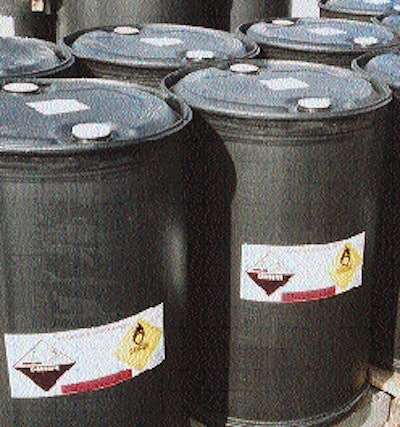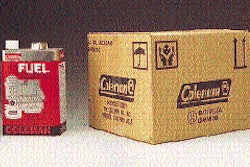The U.S. Department of Transportation's recently-announced changes to its 1990 hazardous materials performance packaging standards are more than narrow, nibbling-around-the-edge modifications for some shippers. The changes, known as HM-215A, appeared in the Federal Register on December 29, 1994. They become effective, for the most part, on October 1, 1996. The purpose of the amendments is to bring U.S. hazmat packaging rules into sync with the latest version of recommendations from the United Nations' Committee of Experts on the Transport of Dangerous Goods. It is not just industrial chemicals that are affected, although they surely are the prime targets. Within the DOT classifications for gases, flammable liquids and corrosives are many consumer products such as food products in aerosol cans, after shave lotions and drain cleaners. HM-215A affects some packaging for those products, too. The DOT decided in 1990 to follow the lead of the rest of the world and adopt performance-based packaging. The new U.S. system was first incorpo- rated in a rule called HM-181. It is being phased in between October 1, 1994 and October 1, 1996. But after the DOT adopted HM-181, the UN Committee of Experts published two successive updated versions of its hazardous materials' shipping recommendations. The purpose of HM-215A was to add these updated recommendations to the regulations prescribed by HM-181. Whether a company packages products-consumer or industrial-in paper, metal, plastic or boxes, it ought to take a very close look at HM-215A. Many shippers are. The PQ Corp., Valley Forge, PA, is one of them. Redefining products Each year, PQ typically ships 200ꯠ-400ꯠ multiwall paper sacks of dry silicates in 50- and 100-lb sizes. Previously, these chemicals have not been considered corrosive. However, HM-215A establishes a new corrosivity testing requirement based on the Organization for Economic Cooperation & Development (OECD) guideline. Mike Kovacs, product manager for dry silicate chemicals at PQ, does not believe that his product will be corrosive when tested by the OECD method. But if he is wrong, and they do test out as corrosive, silicates would go from the "unregulated" category to the hazardous materials group 2 or 3. That would require a change in packaging. Actually, PQ started to upgrade silicate packaging two years ago, long before it even heard of the HM-215A mandates. It spent $150ꯠ to retool its packaging line, and it asked its bag supplier to hand-make samples of new bags. These are now being tested. The procedure for deciding on a new bag can take six months. The process of PQ turning over its old inventory, and its customers flushing old packaging out of their inventories, can take considerably longer. Kovacs expects to spend about $100ꯠ a year on the new, strengthened bags. Extending its reach The spector of hazardous materials transportation does not bring to mind shipments of food or personal care products. But HM-215A will cause some palpitations for those packagers, too. That is because aerosol cans holding anything from cheese spread to hair spray could explode in a fire, and, as a result are regulated by the DOT. In the past, manufacturers have been able to shrink-wrap aerosol cans, place them on a pallet, and ship them on an "exclusive use" basis, which meant the truck had to be filled with only one manufacturer's products. In HM-215A, the DOT tried to come into compliance with the UN system by allowing shippers to send shrink-wrapped packages via common carriers, doing away with the "exclusive-use" only limitation. But, at the same time, the DOT also added a nettlesome proviso not in the UN Recom- mendations. That proviso says if a shipper uses a common carrier, the package must be able to withstand a 2.8- foot drop test on its top, bottom, one side, one end and one corner. Larry Bierlein, a Washington attorney who represents numerous manufacturers including Best Foods, a division of CPC International, says it is unlikely that most shrink-wrapped packages would pass that test. Anyone who is unhappy with the dictates in HM-215A can make an appeal to the DOT within 30 days. Bierlein says he is likely to register Best Foods' dissent. Changes in resusable drums Paul Rankin, president of the Association of Container Reconditioners, says he is also likely to ask for reconsideration. His problem concerns the DOT's failure to clear up confusion about the thickness of 55-gallon steel drums, specifically how thick they have to be in order to be reused. The confusion started in HM-181, when the DOT said that steel drums had to be .82 mm thick in the body and l.09 mm thick in the heads. That describes the typical 20-gauge/18-gauge steel drum. In an updated version of the hazardous materials regulations published in 1991, the DOT changed the body dimension to .80 mm. That means that a thinner, 22-gauge steel can be used in a 55-gallon drum which is reused. For the packager, it means a less costly drum. For drum reconditioners, however, it means each 22-gauge drum will have a shorter life, allowing for fewer trips back to the reconditioner. That means less business for Rankin's members. Rick Norment, executive director of the Steel Shipping Container Institute (SSCI), acknowledges that some drum manufacturers have started to sell 22/18s in recent months. This is in response to market demands: the fact that shippers want less expensive drums to compete with intermediate bulk containers (IBCs) and plastic drums. Also, more and more shippers (and their customers) want to recycle drums after they finish using them. That way, there is no way a drum ends up in a landfill, and no question of liability. It is partly in response to the demand for recyclable drums that more 22/18s are appearing on the market, says Norment. Testing for leaks? Since plastic drums are becoming more popular, a DOT proposal in an earlier draft of HM-215A uncorked a stream of protests. The DOT said that shippers can continue to reuse 55-gallon plastic drums without having them tested for "leakproofness" after every use. Then, in a proposal issued last July, the DOT had suggested making leakproofness testing mandatory after every use. That plan, too, was greeted by noisy criticism. Douglas Brown, president of Brown Chemical Co. in Oakland, N.J., estimates that it would cost $300ꯠ to install and operate a drum testing line in the first year, with successive annual costs of $150ꯠ. "Sourcing this service outside the company would cause a logistics nightmare, potentially result in lost orders, and require additional inventory of drums and additional space to store used drums awaiting processing," Brown explains. "Expected costs to test leakproofness would be a minimum of $240ꯠ annually, on a recurring basis." The DOT reversed itself in the final rule. It is worth noting, however, that leakproofness testing of plastic drums is not required only when two conditions are met: when the drum is refilled with the same or similar compatible contents, and when the drum is shipped within a distribution chain that is controlled by the consignor. The DOT did not always listen to reason, however. Nalco Chemical Co. of Naperville, IL, was one of a number of companies unhappy with the DOT's proposal to require that drums weighing over 30 kg (65 lbs.) contain "durable" markings on either the side or the top of the drum. According to Andy Altemos, a technical advisor to Nalco, the company already stamps that information-including the size and manufacturer of the drum, its performance level-on the bottom of the drum. Nalco wondered why it was necessary to put a second set of markings on the side or top, especially since it is difficult to emboss on a curved drum body. Also embossing is less permanent than the metal marking plates that Nalco welds to the bottom of its drums. For the most part, Nalco uses stainless steel drums that hold more than 100 liters of chemicals. These costly drums are naturally designed for reuse. That's why, under DOT regulations, they are required to be marked on the bottom. The problem with "durable" side markings, says Altemos, is that they may be destroyed in the shipping process. That's true whether they are affixed with stencils, tags or labels. This becomes a problem when they arrive back at Nalco for reuse. This was also a big issue for the SSCI. "I am not sure why our voice was not heard," says Rick Norment. He adds he does not expect the DOT to make many concessions in response to petitions filed in the 30-day period followinng the publication of HM-215A. "But within one year, there is no doubt that the DOT will review certain aspects of 215A," he predicts c Stephen Barlas is a Washington, DC-area journalist working on special assignments for Packaging World. Leakproofness testing of reusable plastic drums is not required each time, only when two conditions are met.



























